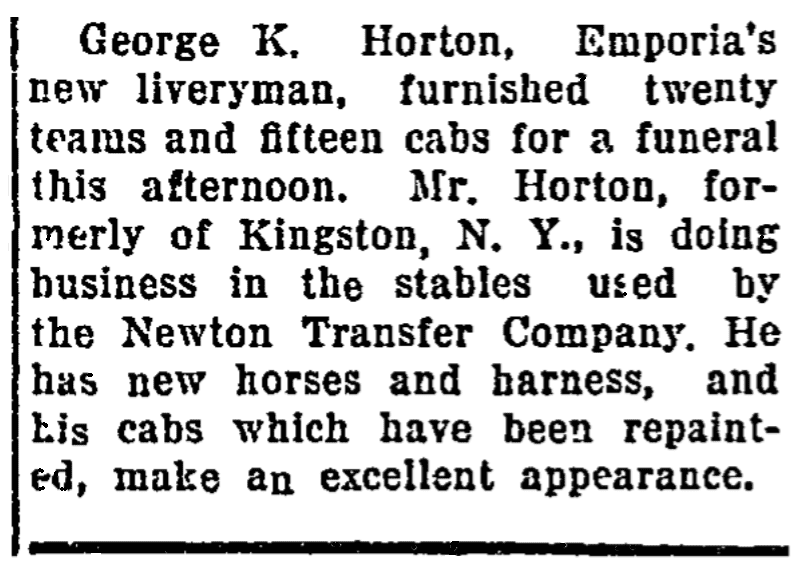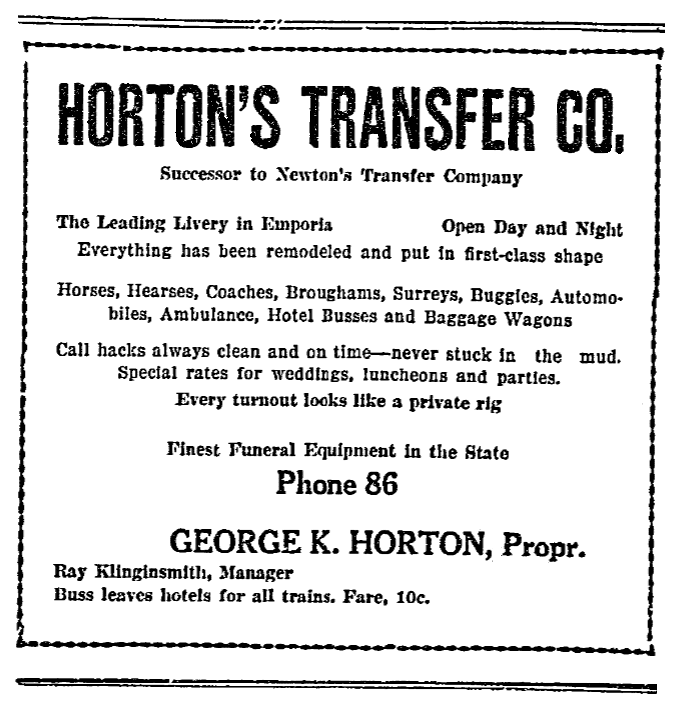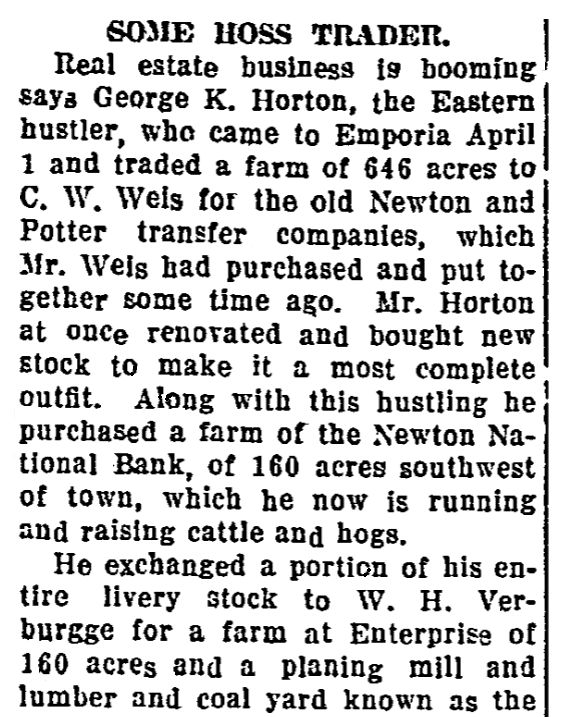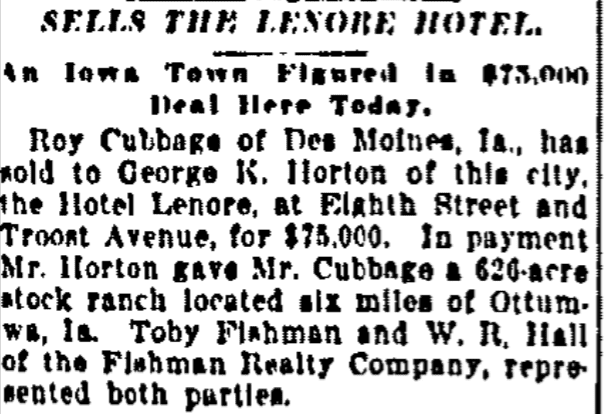After being contacted by a cousin recently, I started looking deeper into the life of his grandfather George Kemp Horton (1873-1953). I realized I didn’t know much about him.
In the 1900 census, when George was 26 years old, it stated that he worked at a “Livery Sales Stable” in Catskill, Greene County, New York.
By the 1910 census he was living in Kingston, Ulster County, New York, worked in real estate, was married, and they had three children.
By the 1920 census they lived in Kansas City, Missouri. He was still working in real estate, and now they had four children.
The census gave me good information: he was a liveryman; worked in real estate; and had moved across the country to Kansas City, Missouri. But what was he really like – what was his story?
To find out more, I turned to GenealogyBank’s Historical Newspaper Archives
This newspaper article tells that he was still in the livery business in 1915, and was the “new liveryman” for Emporia, Kansas.

This article also reports that George was “formerly of Kingston, N.Y.” and was “doing business in the stables used by the Newton Transfer Company,” which he spruced up and updated with “new horses and harness” and with cabs that “have been repainted [and] make an excellent appearance.”
On 6 May 1915, George “furnished twenty teams and fifteen cabs for a funeral” in Emporia. That’s a big operation he was running.
I also found this ad, in which George called his business “Horton’s Transfer Company” – and it was “open day and night.” His phone number was 86 – that would be easy to remember.

It looks like he was combining his livery and real estate skills.
A June 1915 article tells us how he bought Newton’s Transfer Company.

This article reports:
“Real estate business is booming says George K. Horton, the Eastern hustler, who came to Emporia April 1 and traded a farm of 646 acres to C. W. Weis for the old Newton and Potter transfer companies, which Mr. Weis had purchased and put together some time ago… Along with this hustling he purchased a farm of the Newton National Bank, of 160 acres southwest of town, which he now is running and raising cattle and hogs.”
He was a man on the move.
According to this article, George traded “a portion of his entire livery stock” to a Mr. W. H. Verburgge for a 160-acre farm, along with the old Sprague property that had a lumber and coal yard – and a home on Market Street in Emporia.
Wow! But it didn’t stop there.
“He then swapped the balance of his funeral equipment… for a brand new Studebaker automobile” and cash.
It turns out that “Mr. Verburgge didn’t like the livery business and he traded it for a farm” and then “Mr. Horton immediately traded his Studebaker car [and] paying the difference… [bought back] the entire livery stock” which he had originally sold to Mr. Verburgee.
The article ends by saying that in Emporia:
“Mr. Horton has advertised himself in Emporia and everyone knows him by his ‘canary car,’ a shy wood violet of a car that you can hear seven miles when it is standing still with a dead engine! It is a Buick painted a bright yellow with a red stripe, and the car is going the streets or to the farms at all times.”
He was making quite an impression on Emporia, Kansas, and vice versa.
“Mr. Horton says he likes Emporia very much and expects to move his family here soon.”
Four years later he bought the Hotel Lenore in downtown Kansas City, Missouri, for $75,000. He paid for that transaction with “a 626-acre stock ranch located six miles of Ottumwa,” Iowa.

George was quite the entrepreneur! It’s in the old newspapers that we find the stories of our ancestors’ lives – the stories that tell us who they were, and what they did and accomplished.
